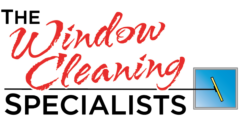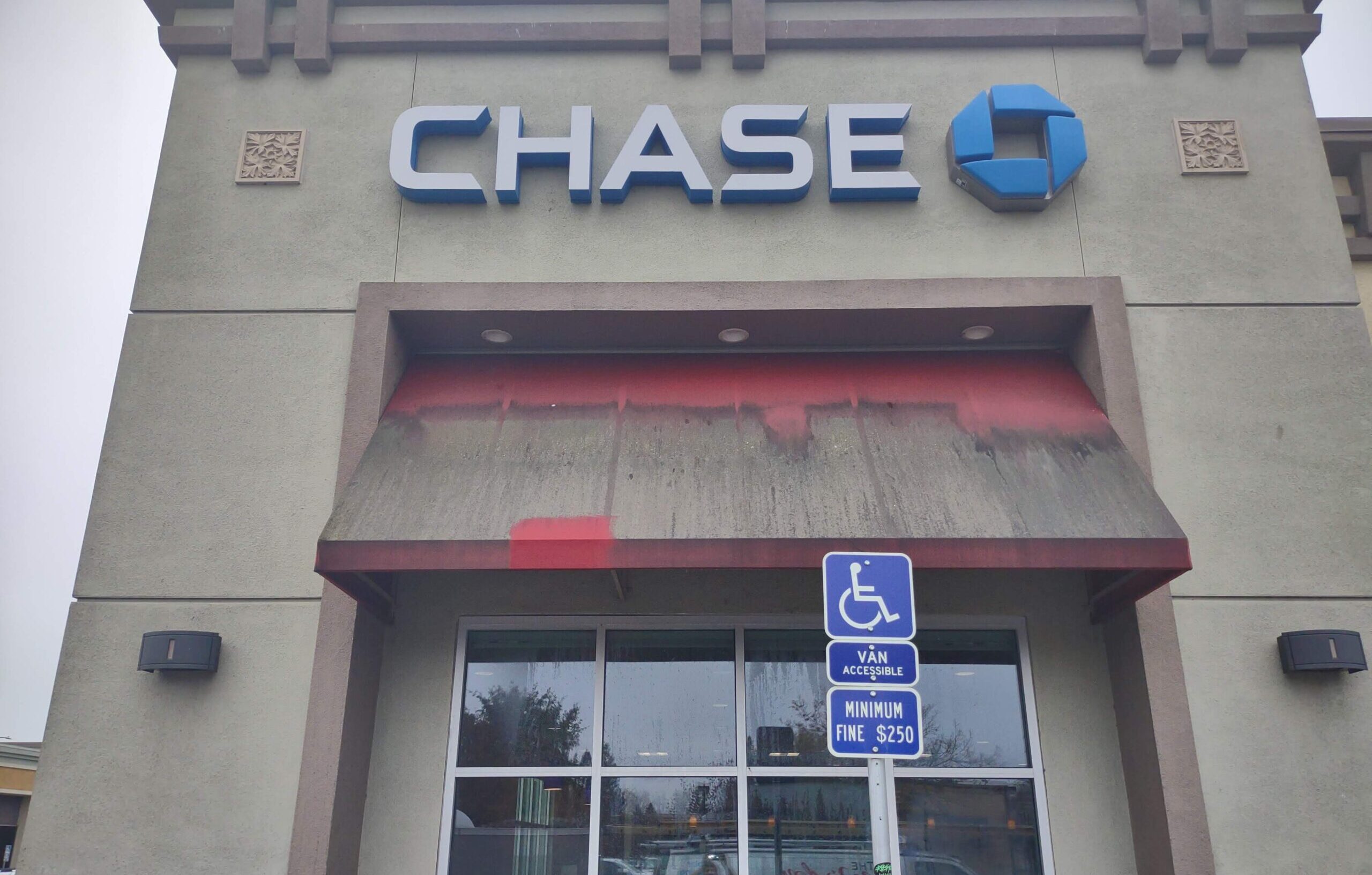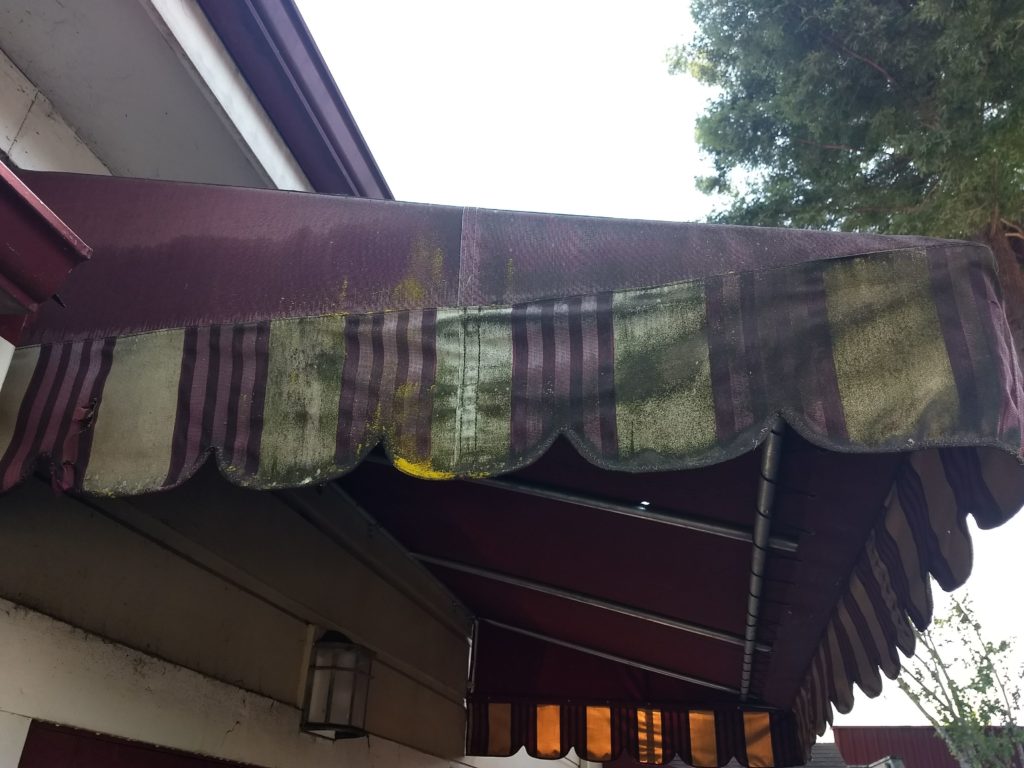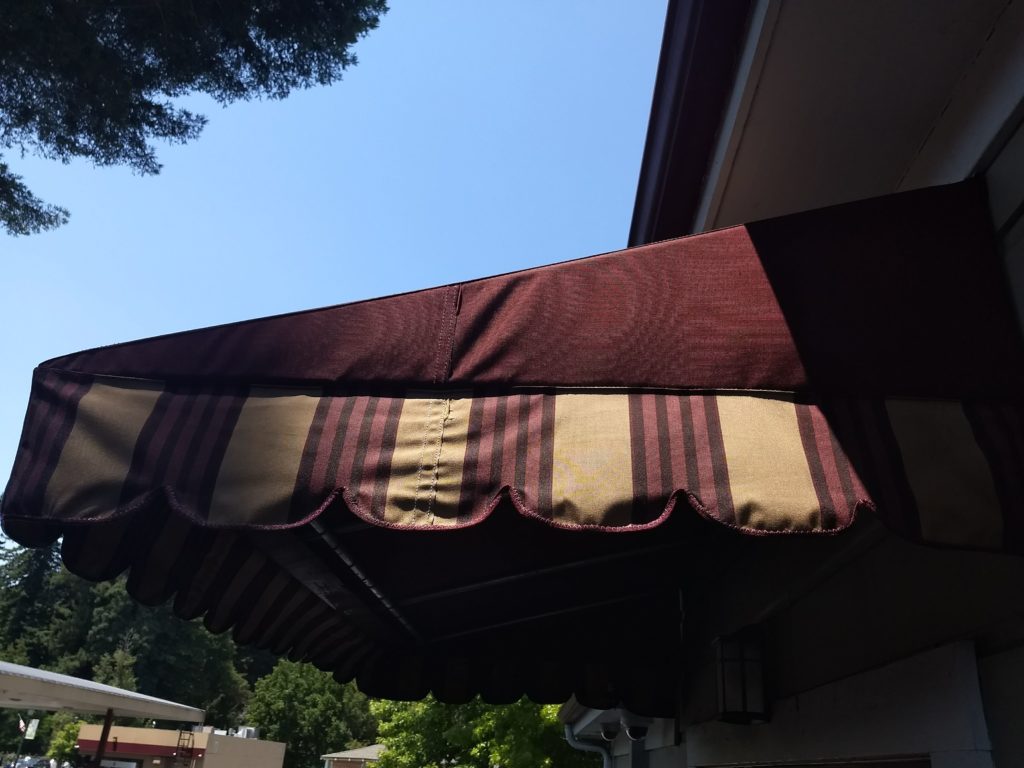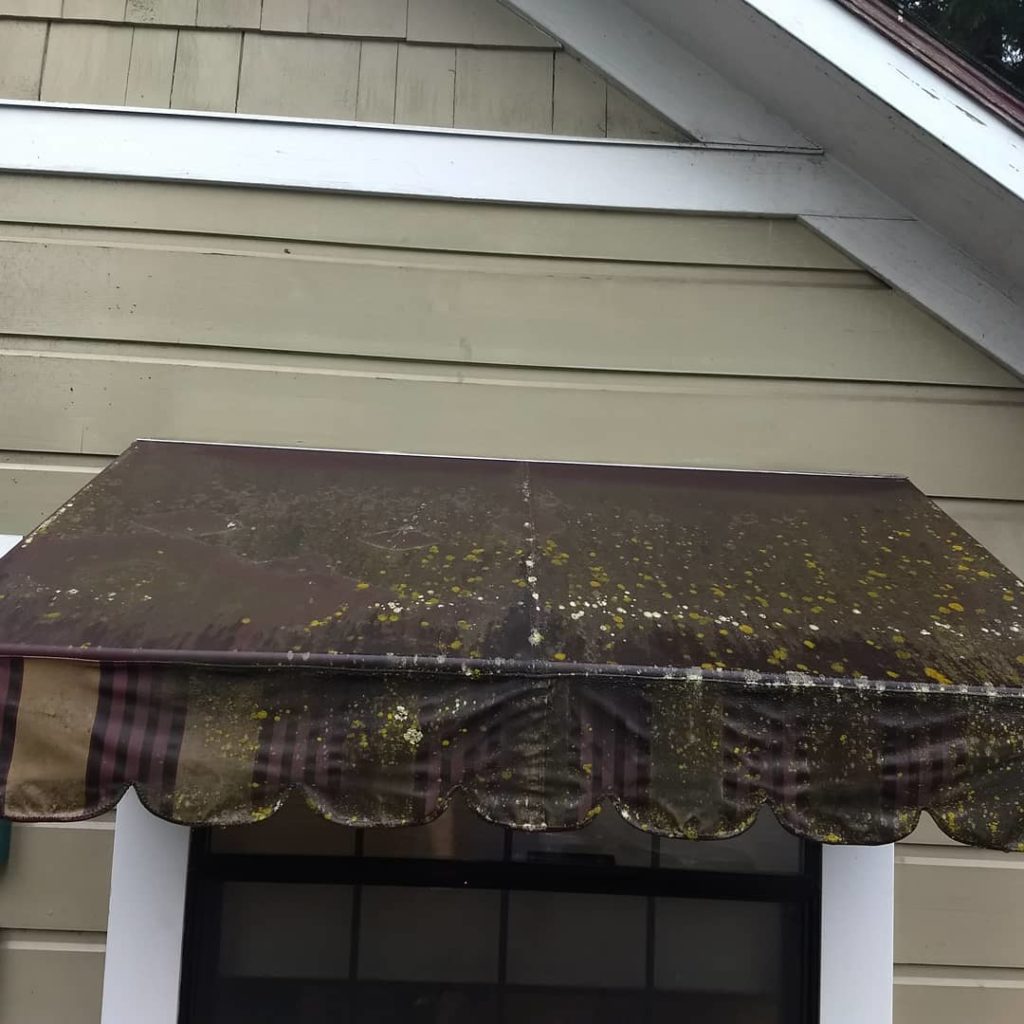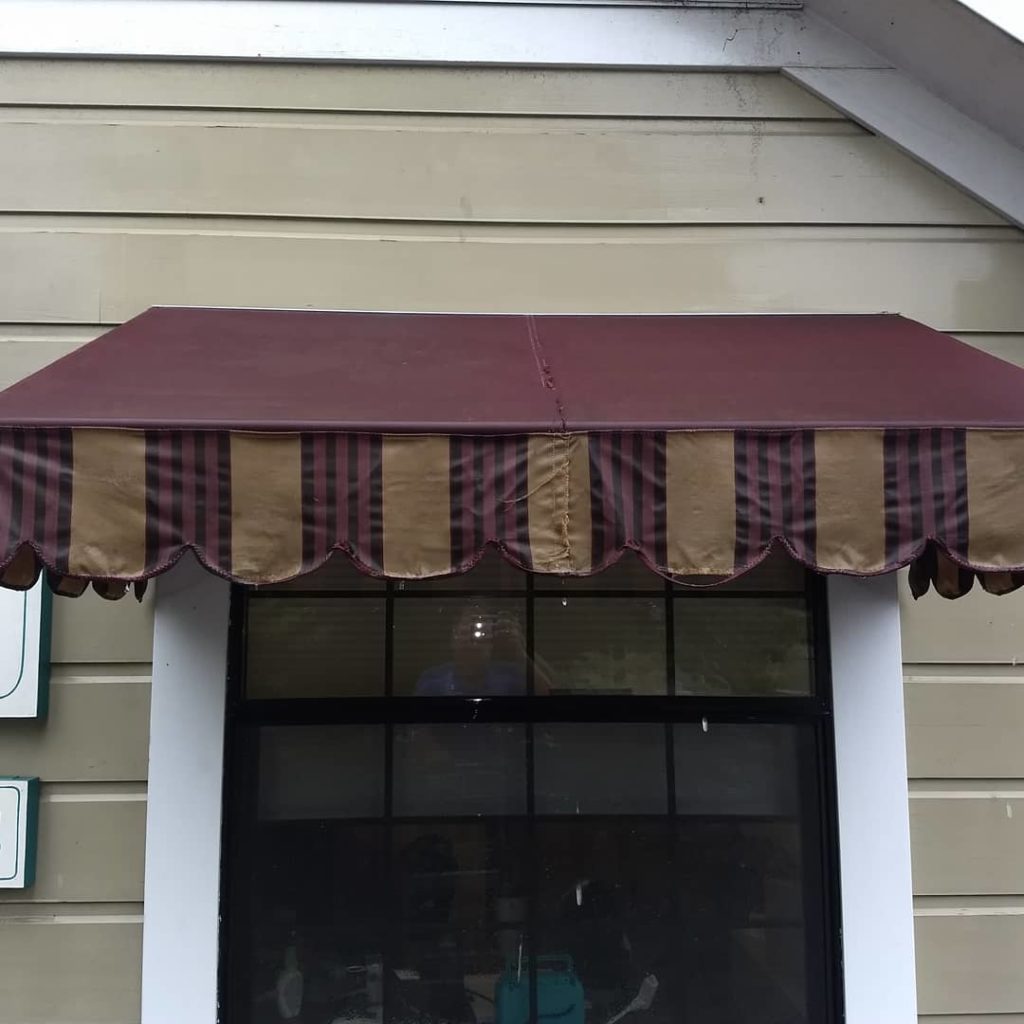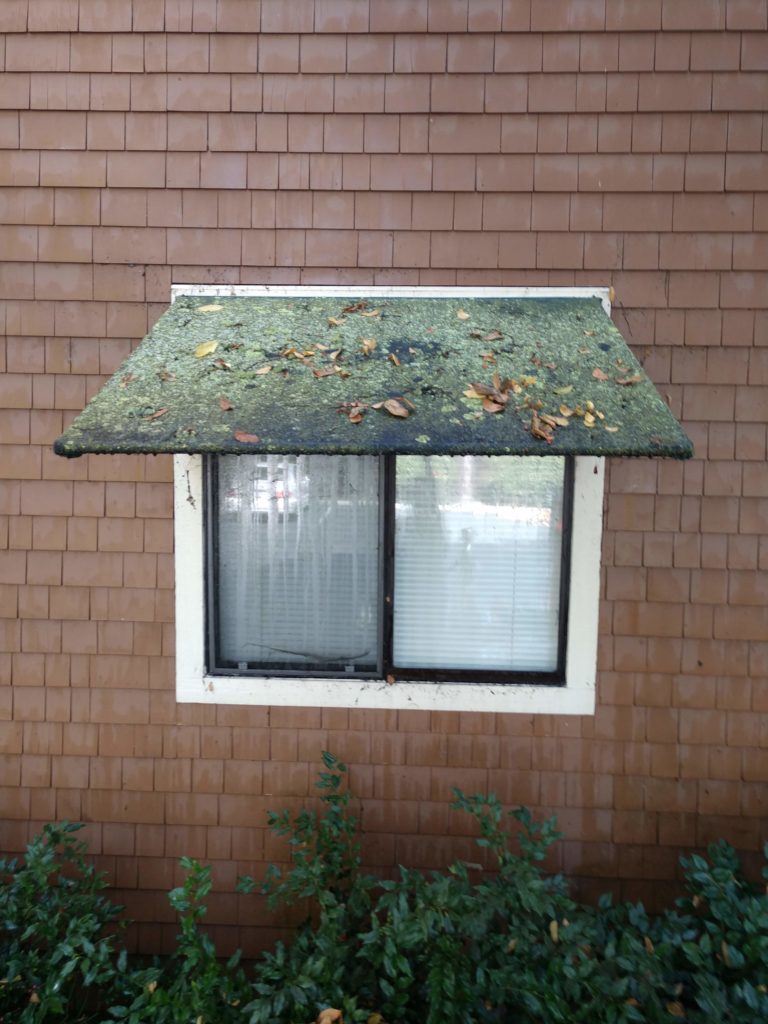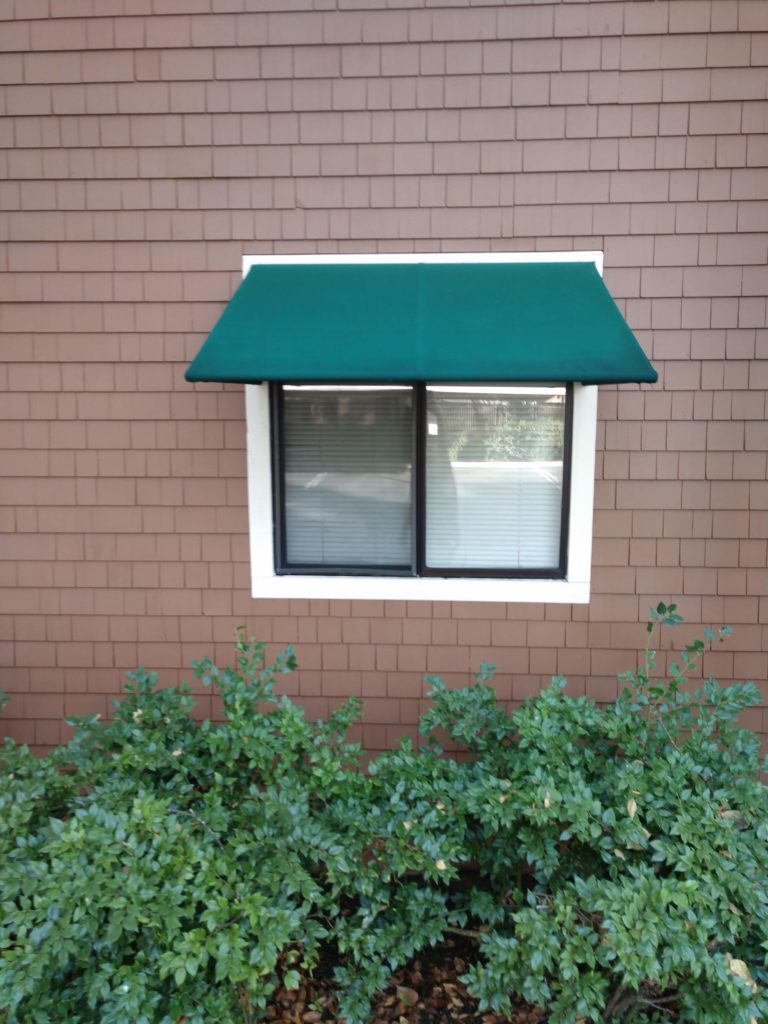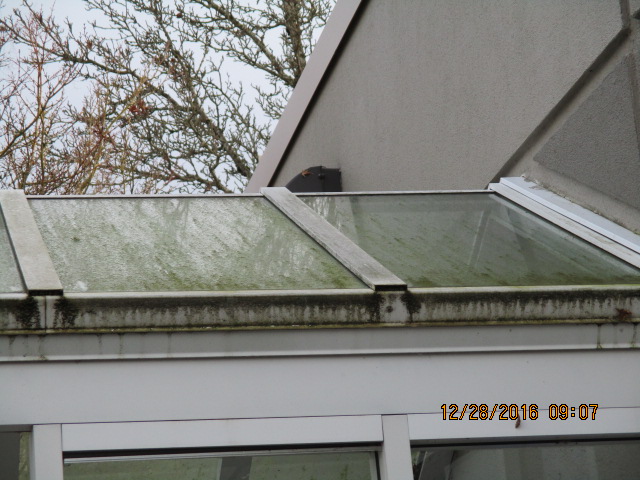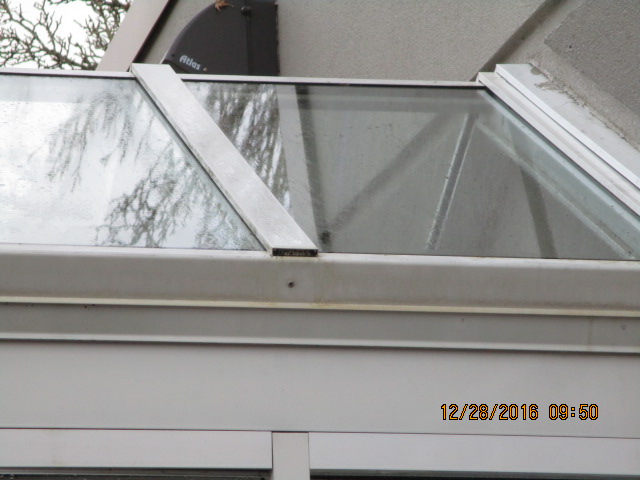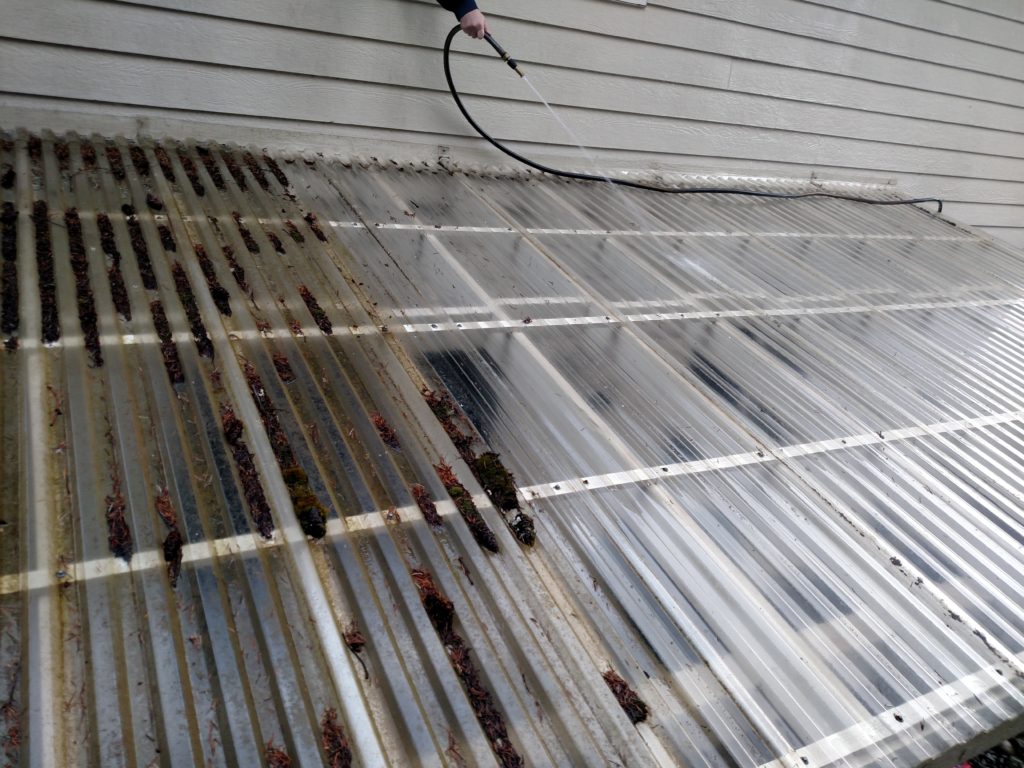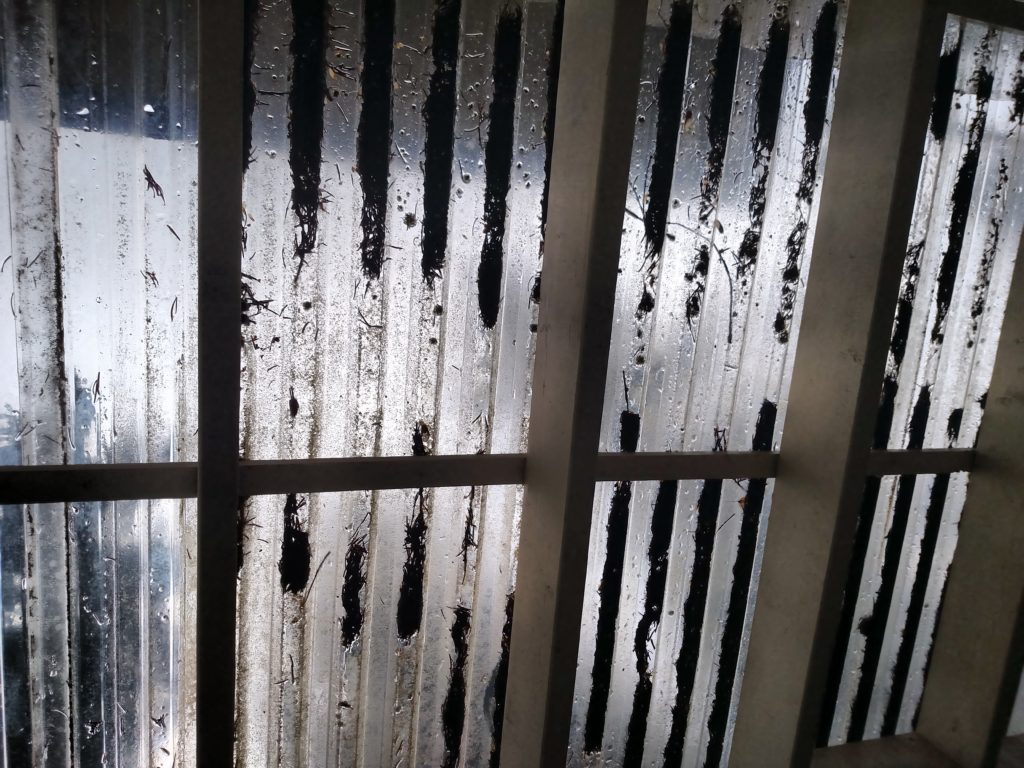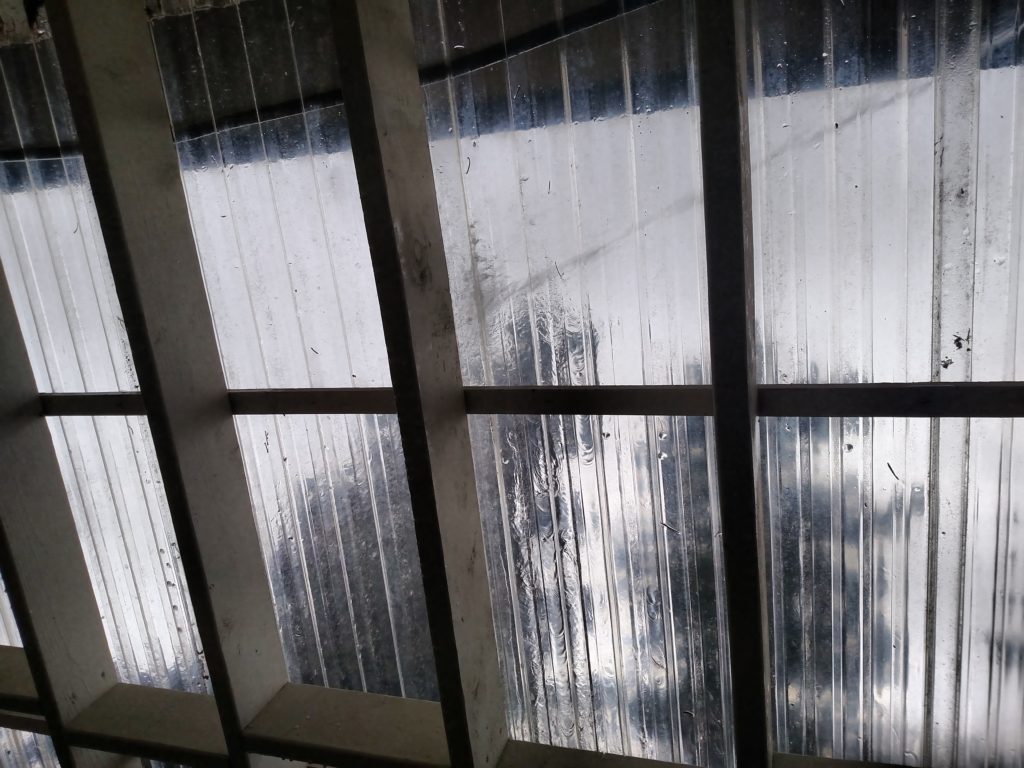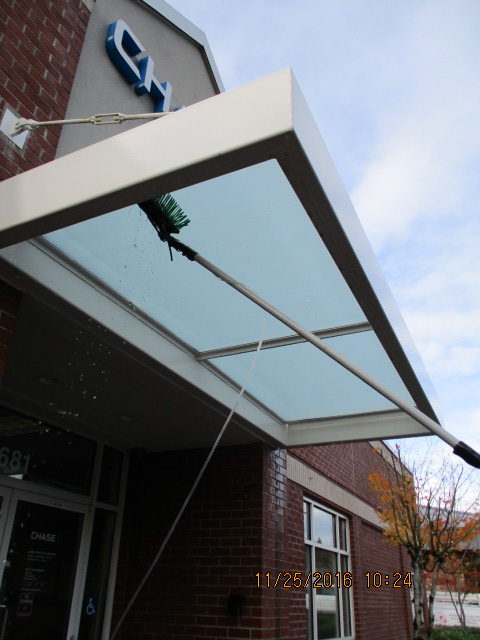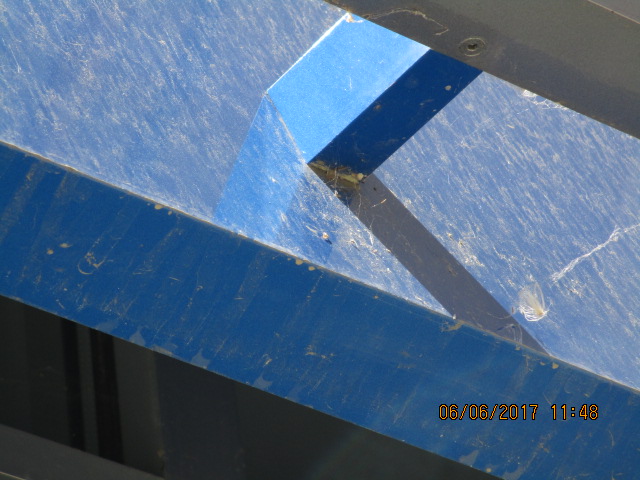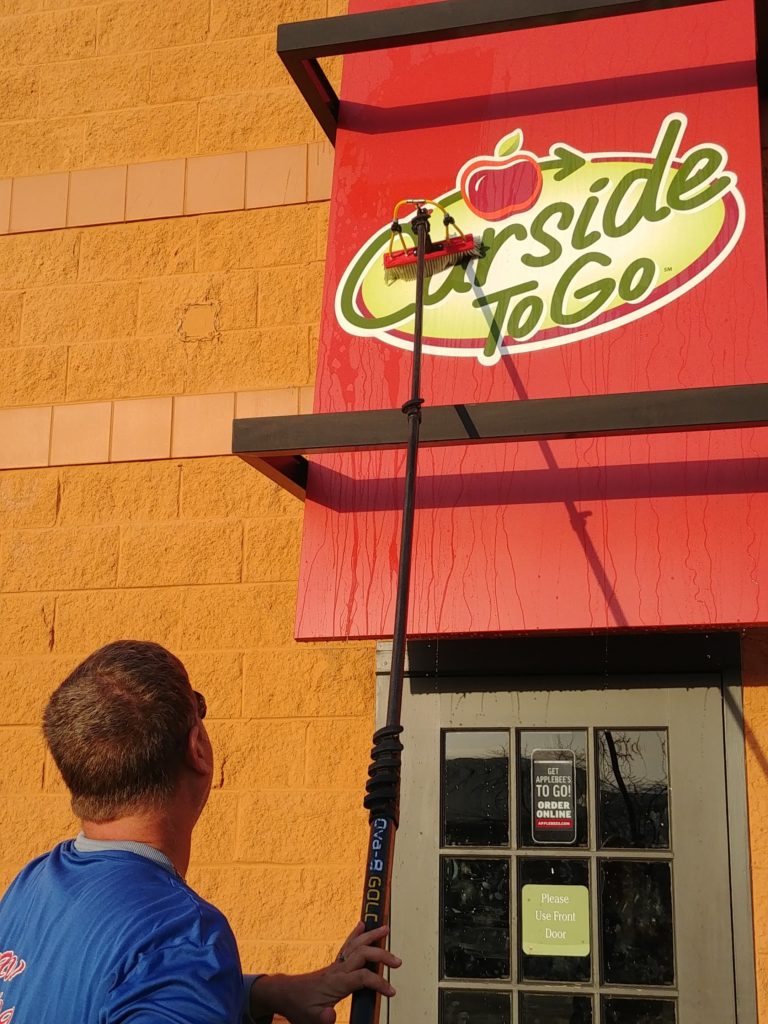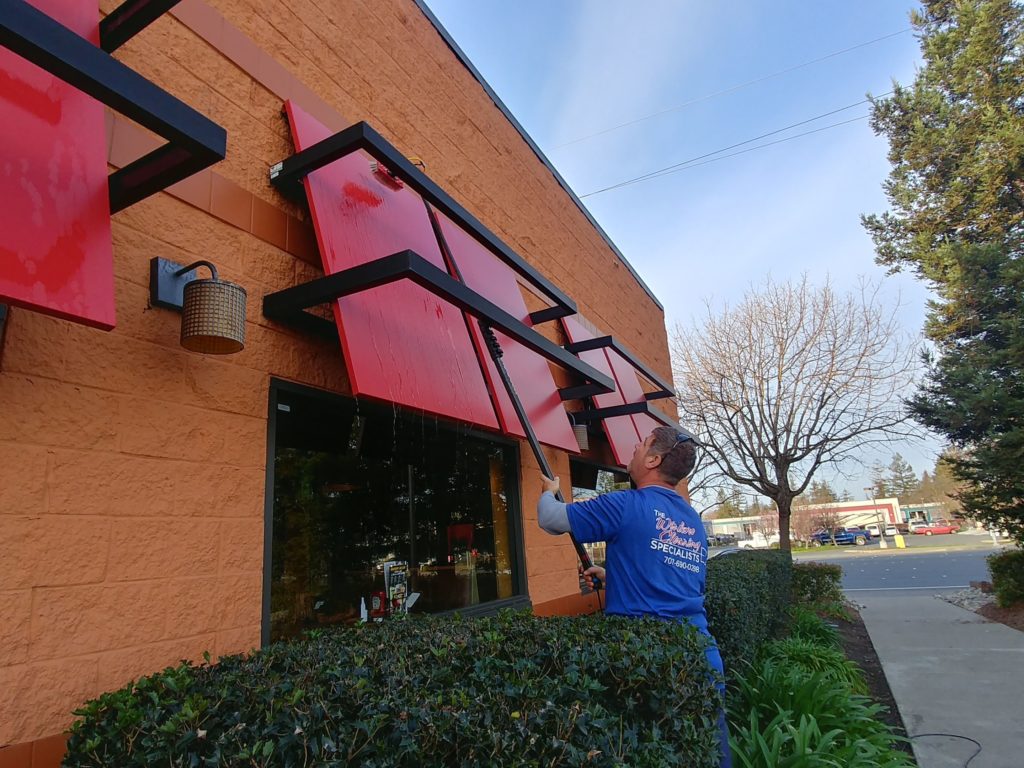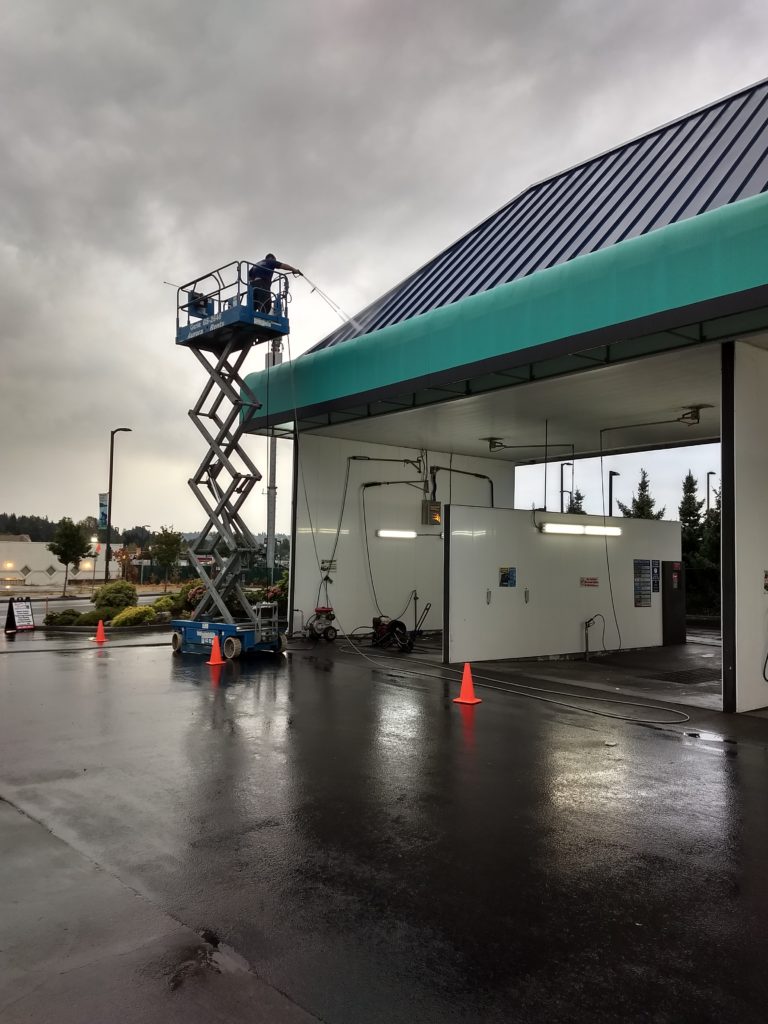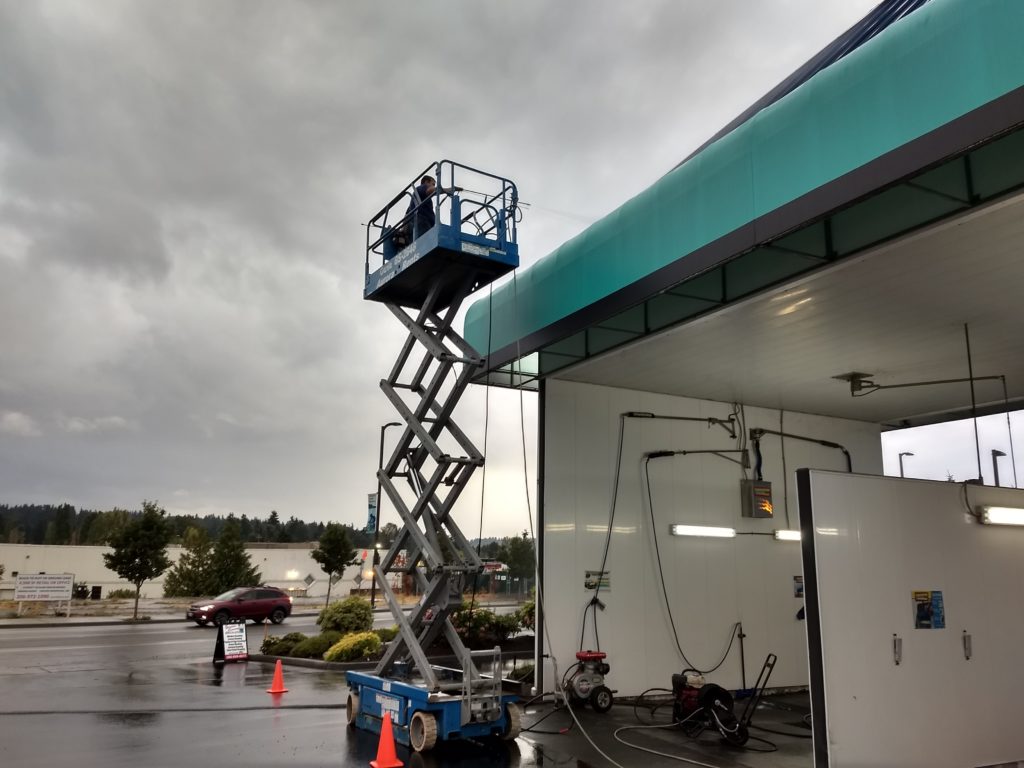HOW WE DO AWNING CLEANING
- WHY DOES IT MATTER WHAT KIND OF CLEANERS TO USE?
Because of the materials used in the construction of the different fabrics, especially vinyl. Vinyl is a petroleum-based product that in resin form is layered over the scrim (loosely layered woven threads) to form a flexible vinyl fabric. If a degreasing compound is used to clean this type of fabric it can actually strip a layer of vinyl off. You must also be careful to use a cleaner that does not contain a solvent or alcohol. These types of products can actually remove color from eradicable fabric. When cleaning a woven fabric, you must use a chemical that will not promote color bleeding. These types of fabrics are more commonly solution dyed these, days so this is becoming less of a problem.
- WHAT MAKES WINSOL’S PRODUCTS ANY SAFER THAN OTHERS?
WINSOL’s products are designed in conjunction with one of the world’s largest- producers of vinyl fabric. Therefore, our formulations are tested every step of the way to make sure they will not damage fabric even if misused. That is the guarantee we give to all of our customers. WINSOL products are the only ones on the market approved by all of the major manufacturers of awning fabric. Therefore, any work done with our products will not void warrantee’s. HOW MANY DIFFERENT TYPES OF FABRIC ARE THERE? There are basically two types of fabric: woven and vinyl. Within these two groups, However, there are literally thousands of grades, styles and manufacturers. IF THERE ARE SO MANY DIFFERENT KINDS OF FABRIC HOW DO I KNOW WHAT WILL HURT THEM AND WHAT WILL NOT? Because we had the opportunity to work with a fabric manufacturer from the very beginning and we used this experience when designing our entire line of products. WINSOL awning maintenance products are designed to be both safe and effective on even the most delicate fabrics. We will guarantee the customer that they will not damage any fabric, even if misused. DO I NEED TO BE CAREFUL ABOUT THE TYPE OF EQUIPMENT I USE? Yes, it is vitally important that you are not too aggressive on vinyl or woven fabrics. On vinyl the danger is scratching the surface. This will dull the finish and possibly allow moisture to penetrate to the scrim and cause mildew to grow under the vinyl coating. If this occurs there is nothing that can be done to remove it. On woven fabric the danger is abrading or “fuzzing” the surface. This will give the awning a fuzzy look when it is dry and shorten the life of the fabric. WHAT SORT OF EQUIPMENT WILL WE DBA THE WINDOW CLEANING SPECIALISTS, LLC BE USING? To get started what we use is a ladder, bucket, source of water and a brush or awning sponge. The brush should be about the stiffness of a hog’s hair brush. The bristles should be relatively short, around 2″ in length. If the bristles get any longer they have a tendency to lay flat and this will inhibit your scrubbing effectiveness. For applying the awning armor the most effective way is with a pole, window washers T-bar and a scrub sleeve or towel fastened. This will give us a wide path of coverage and a soft applicator. We can go from a bucket and brush to a pump sprayer and even a boom truck. HOW DOES DBA THE WINDOW CLEANING SPECIALISTS, LLC CLEAN A VINYL AWNING? There are two types of cleaning: maintenance and restorative. Maintenance cleaning can be done with WINSOL’s AWNING CLEANER AND PROTECTANT. This is a one step process that is effective on new vinyl awnings that are cleaned within about 3 months of installation or on awnings that have already been restored and are re-cleaned every 2-3 months. Restorative cleaning is a two-step process. It is performed with WINSOL DEEP CLEAN as the first step and followed up with WINSOL AWNING ARMOR or XTRA SHINE. Restorative cleaning is necessary whenever an awning is badly soiled and neglected. This will likely be the bulk of your cleaning, especially when you first start and don’t have clients on a cleaning schedule. The cleaning process is the same for both. Start by rinsing the awning down. This will remove loose soil and debris. Next, using the appropriate cleaner (mixed following the label instructions) scrub an area no larger than you can keep wet until you are ready to rinse. It is important to clean from the bottom up to avoid clean streaks. When you have thoroughly scrubbed an area, rinse and move on to the next section. If you are doing a maintenance cleaning rinse once more and you are done. If you are doing a restorative or heavy cleaning proceed to the second step the application of AWNING ARMOR or XTRA SHINE. The awning armor must be wiped on using a soft applicator. It is not necessary to perform any rubbing or buffing though. Let the sealer soak into the fabric and you are done.
- WHAT IS PLASTICIZER MIGRATION?
Plasticizer migration is the natural “off gassing” or drying of vinyl and plastics. This process cannot be stopped but it can be slowed down. The more slowly an awning loses its plasticizers the longer it will last and the better it will look. That is why it is important to replace some of the plasticizers after each cleaning. This can be done by the use of the one step AWNING CLEANER AND PROTECTANT or through an application of AWNING ARMOR or XTRA SHINE.
- DO I HAVE TO USE ONE OF THE VINYL SEALERS EVERY TIME I USE THE DEEP CLEAN OR CAN I USE AWNING CLEANER AND PROTECTANT?
Yes, you should use AWNING ARMOR or XTRA SHINE every time you use DEEP CLEAN. The use of AWNING CLEANER AND PROTECTANT will not properly seal the fabric after the use of DEEP CLEAN.
- WILL THE DEEP CLEAN ALWAYS REMOVE ALL THE STREAKS?
No, sometimes awnings have been neglected to the extent that they cannot safely be completely cleaned the first time. It also depends greatly on the grade of the fabric and the environment to which it was exposed. Most of the time an awning will come completely clean with its second scheduled cleaning. If you have cleaned an awning that will not release all of its streaks go ahead and treat it with AWNING ARMOR or XTRA SHINE. The penetration of our sealers often, lift dirt to the surface as they hydrate the fabric and will allow you to clean it the next time.
- DOES WINSOL HAVE ANYTHING THAT WILL GET STREAKS OUT THE FIRST TIME, EVERY TIME?
A qualified yes. We have cleaning products that we manufacture for other markets that will remove the black streaks with a single cleaning. If they damage the awning in the process, however, we are not really helping you. The DEEP CLEAN is generally as aggressive as you wish to get. A more aggressive cleaner or application system can potentially damage the awning and leave you to foot the replacement cost. When dealing with mold, algae or other growth in woven fabrics the manufacturers recommend a mixture of 4 ounces of laundry bleach mixed with one gallon of water as a pre-spray to kill any growths in the awning.
- DO I USE AWNING ARMOR OR XTRA SHINE ON FABRIC AWNINGS ALSO?
No, fabric awnings do not need plasticizer replacement. What is required for fabric awnings is the use of a waterproofing sealer. We at WINSOL, as well as the fabric manufactures, recommend a non-silicone, air-drying, fluorocarbon based waterproofer. WINSOL AWNING GUARD 690+ is the product of choice for this application. It is best to waterproof fabric awnings annually.
